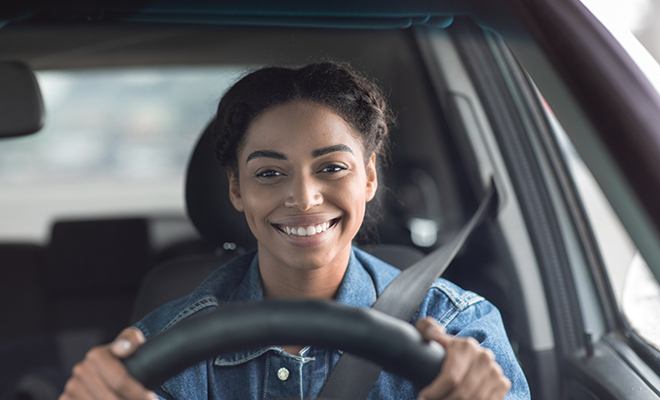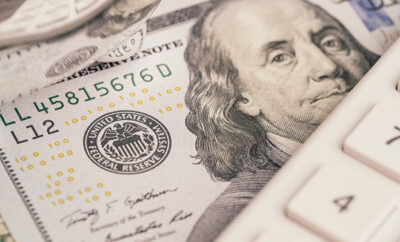
Hypermiling: Doesn’t It Make Good Sense?
When my dad taught me to drive, his instructions were always calm and logical. “Pretend you have an egg under the accelerator.” “Don’t speed up to a red light and slam on the brakes.” “Learn how to time the traffic lights.”
He’s no longer with us, but I know he would laugh to recognize that the principles he taught me have a new name: hypermiling. With inflation and today’s gas prices, squeezing every mile out of every gallon of fuel takes on new meaning.
With an electric vehicle or hybrid, some of these techniques may not be so crucial. And some new vehicles with eco-boost technology improve mpg. But many hypermiling tips save money at the pump, help you maintain your car and become a safer driver.
Tires
Check tire pressure at least monthly. Your dashboard likely monitors it for you through a tire pressure monitoring system, but using a tire gauge to check it can confirm this measurement. The manufacturer’s recommended pressure is usually noted on the glove compartment door or driver’s side door pillar. Underinflated tires can lower fuel economy by as much as 3 percent! Tire pressure is also affected by ambient temperature, so keep an eye on it as seasons change.
Drag
One hundred pounds of junk in the cargo space can reduce gas mileage up to 2 percent, according to the U.S. Department of Energy. And isn’t a minimally-loaded vehicle attractive? Remove roof racks or bike racks, if not used, which reduces aerodynamic drag and improves gas mileage.
Stay Consistent
Smooth driving is key to maximizing fuel economy. If you’re driving a familiar route, you’ll see how timing the lights to anticipate changes can improve mileage plus save the car’s brakes. If you see a traffic wave up ahead, take your foot off the accelerator to slow the vehicle naturally and brake gently. With practice, you might not ever come to a complete stop at traffic lights and still not smash the egg under the gas pedal when the light turns green. Just remember that a full stop is needed at stop signs.
Speed
Or don’t. The U.S. Environmental Protection Agency states every 5 miles over the 60 mph level is the same as paying an additional 20 cents per gallon for gas, or more as prices increase. Following the speed limit on any road, and driving slower when weather conditions are dangerous, is good practice. Don’t get into the pitfall of rushing to your destination. Leave a little earlier so you can practice good driving habits. The drive may even be more relaxing if you’re not worried about a flashing blue light pulling up behind you.
Fuel
Track your miles per gallon through your car’s computer (or do it the tedious way with receipts and a calculator). On a recent trip in a 2021 Hyundai Sonata, I achieved 30M mpg for a -mile trip combining city and highway driving. Some experts who track tank-to-tank economy assert that today’s onboard computers are optimistic and give better-than-actual mileage, so perhaps a notebook and saving gas receipts will give you a way to check that calculation.
Idling
Try not to. If you’re sitting at a drive-through or waiting, turn off the engine. Fuel economy can be improved by up to 19 percent if engine idling is reduced.
Cruising
Using cruise control smooths out the driver’s accelerator input by preventing surging. It also encourages the driver to look ahead, anticipating merging lanes and overall traffic conditions. It can create average savings of up to 7 percent; challenge yourself to improve on that. However, turn it off if you’re driving in a mountainous area; it will try to keep up to the speed you set and use more gas.
Momentum
Using the car’s weight and forward motion contributes to smooth driving, as noted above. Time your approach to arrive at a stop sign as the car ahead is departing. On a familiar route, you can maximize transition points of deceleration and acceleration. Coast whenever you can!
If you regularly travel the same roads, make a conscious effort to note (memorize) the points along the way where transitions occur that maximize efficiency.
Aerodynamics
It’s similar to what race car drivers do. A consistent flow of traffic, such as on an interstate highway, creates a localized wind current in the direction of travel; you’ll benefit from this artificial breeze. If possible, time your trips to take advantage of tailwinds or to avoid headwinds. Crosswinds are also a problem. In this weather condition, choose, if possible, a route that has barriers such as trees or buildings to reduce this annoyance.
My final tip? Let the most efficient, safest driver drive. Learn from her wisdom. If you’re following the speed limit and hearing honks from impatient drivers, just wave, smile, and know you’re saving that green!
Sources: hypermiling.net, ecomodder.com, edmunds.com and torquenews.com.







